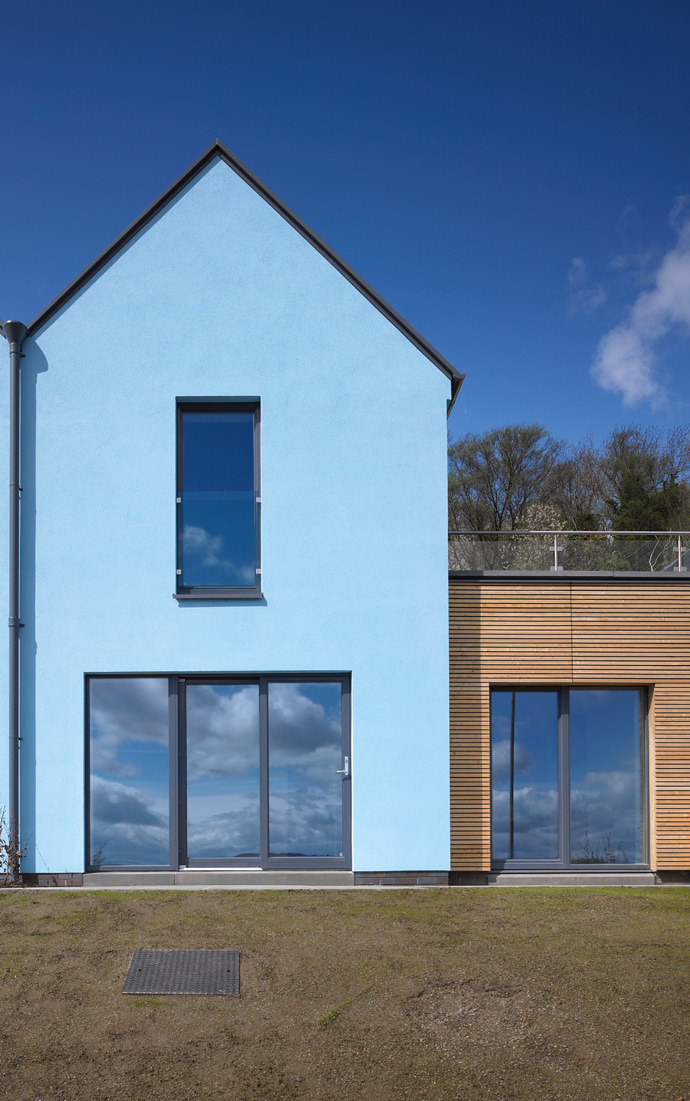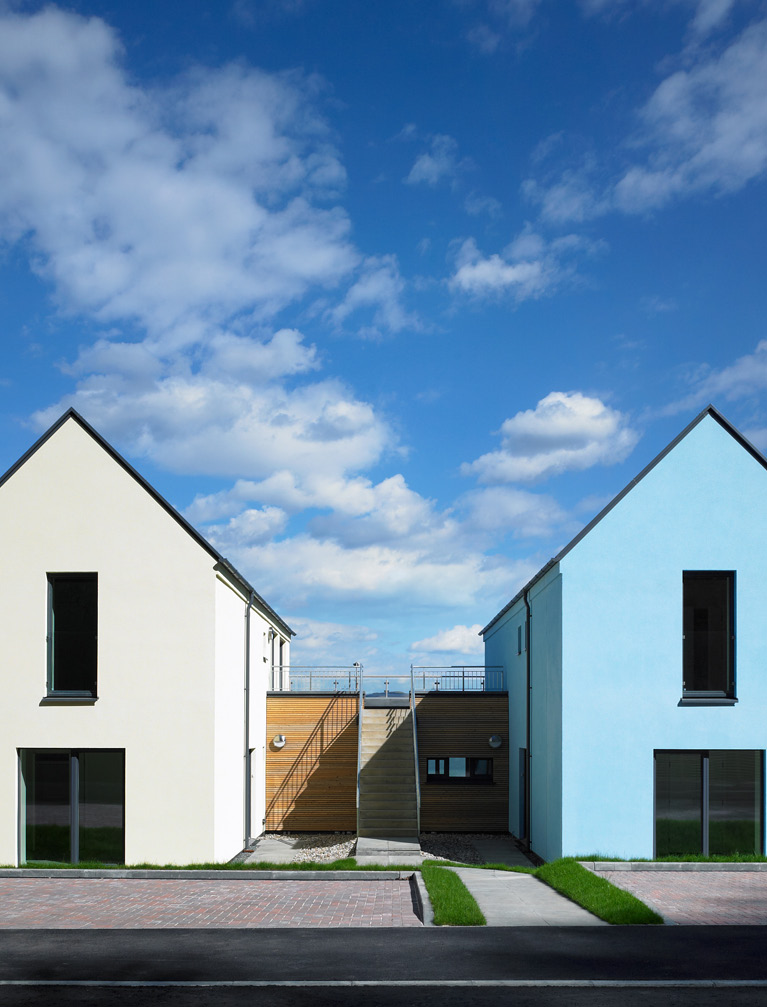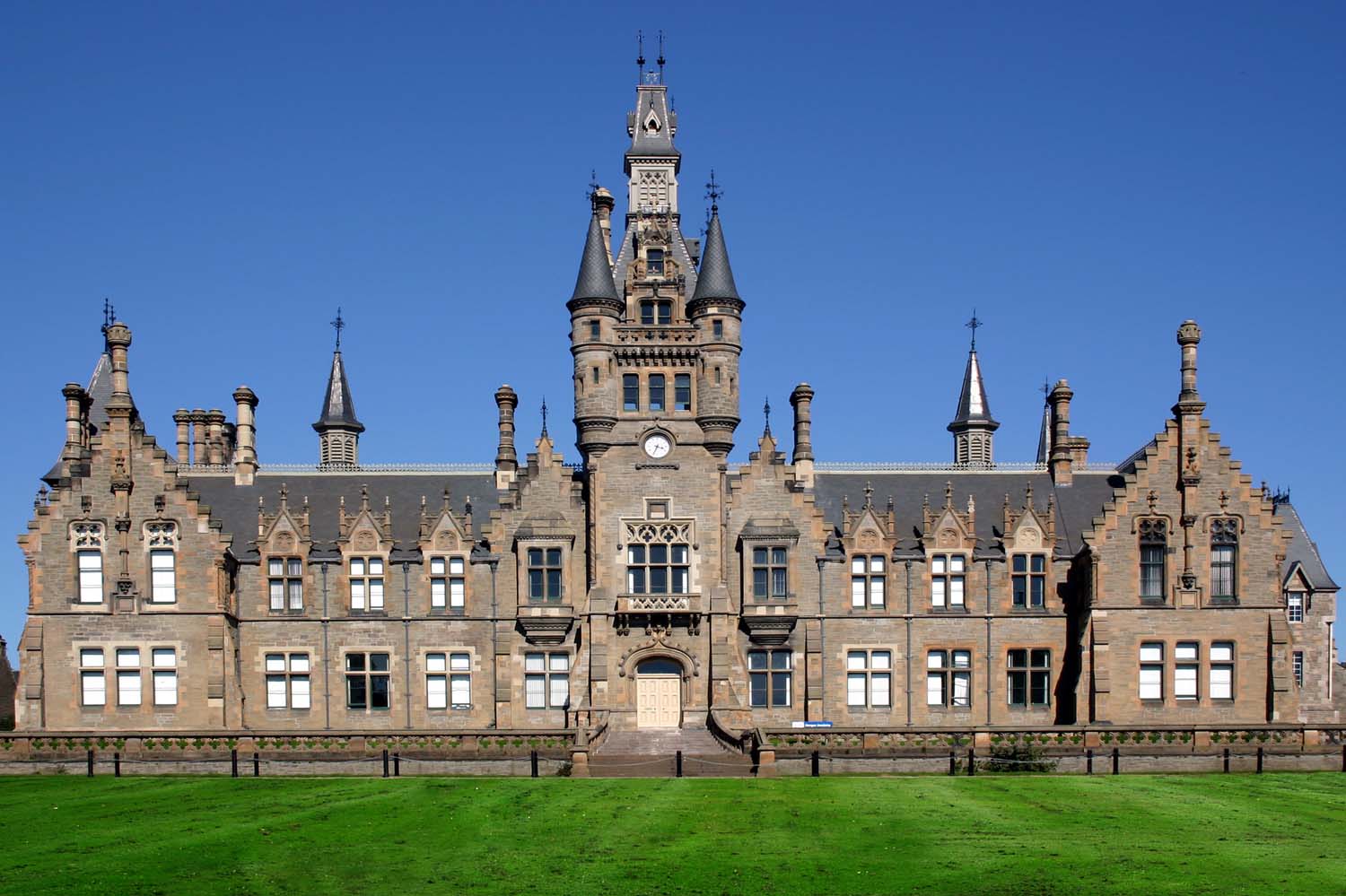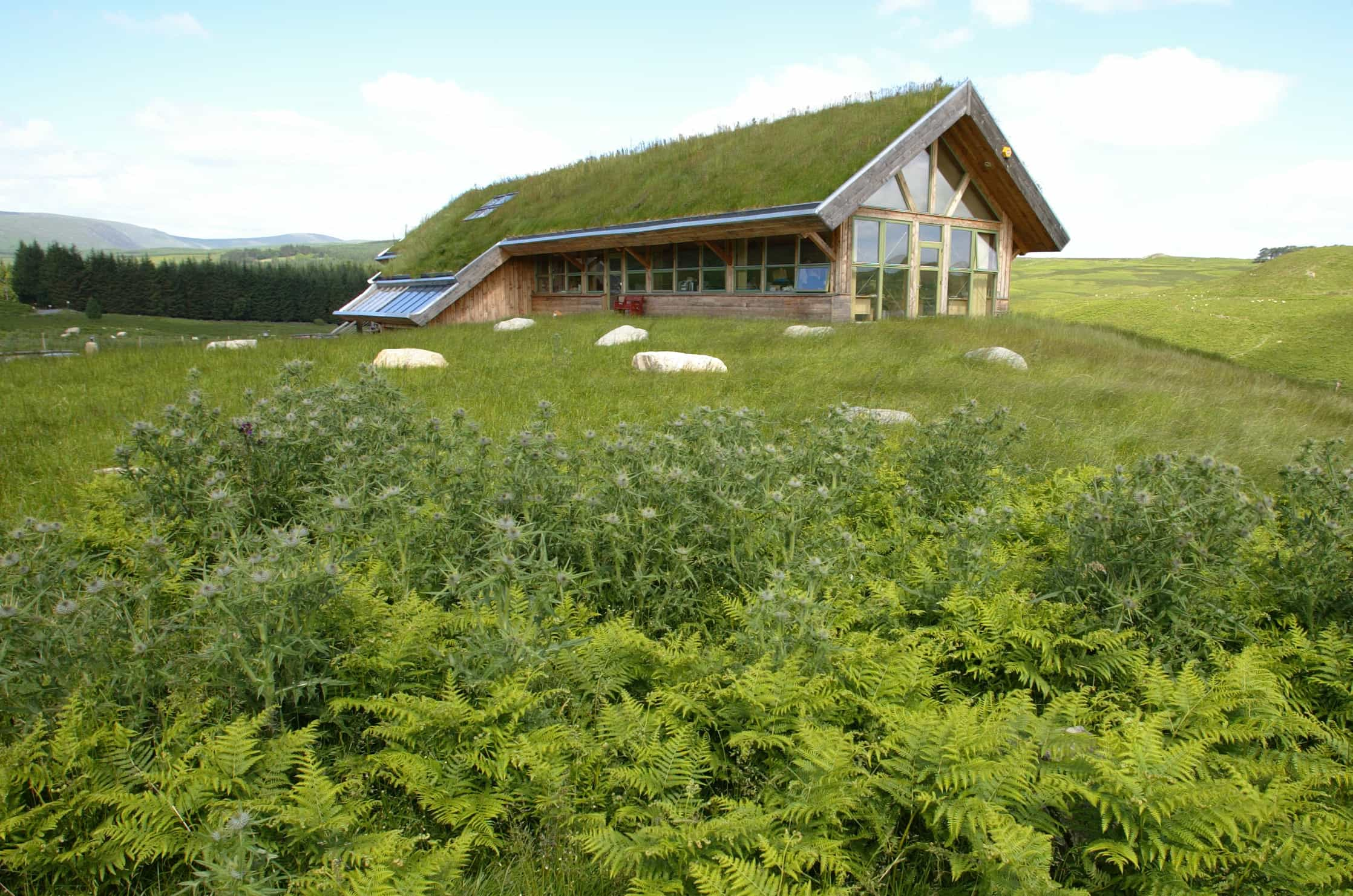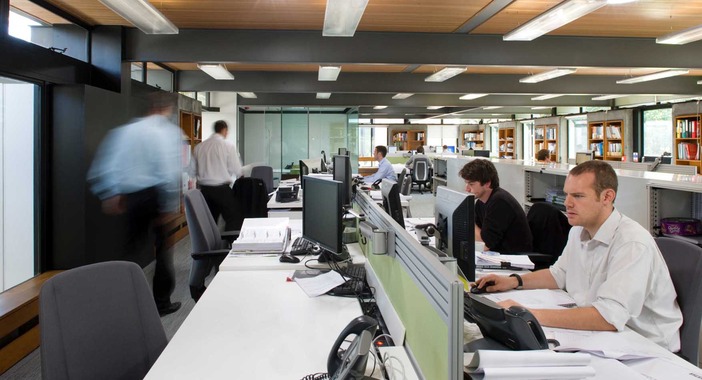Tigh-Na-Cladach
A development of 15 low-energy houses for first-time buyers, which includes the first social Passive House in the UK.
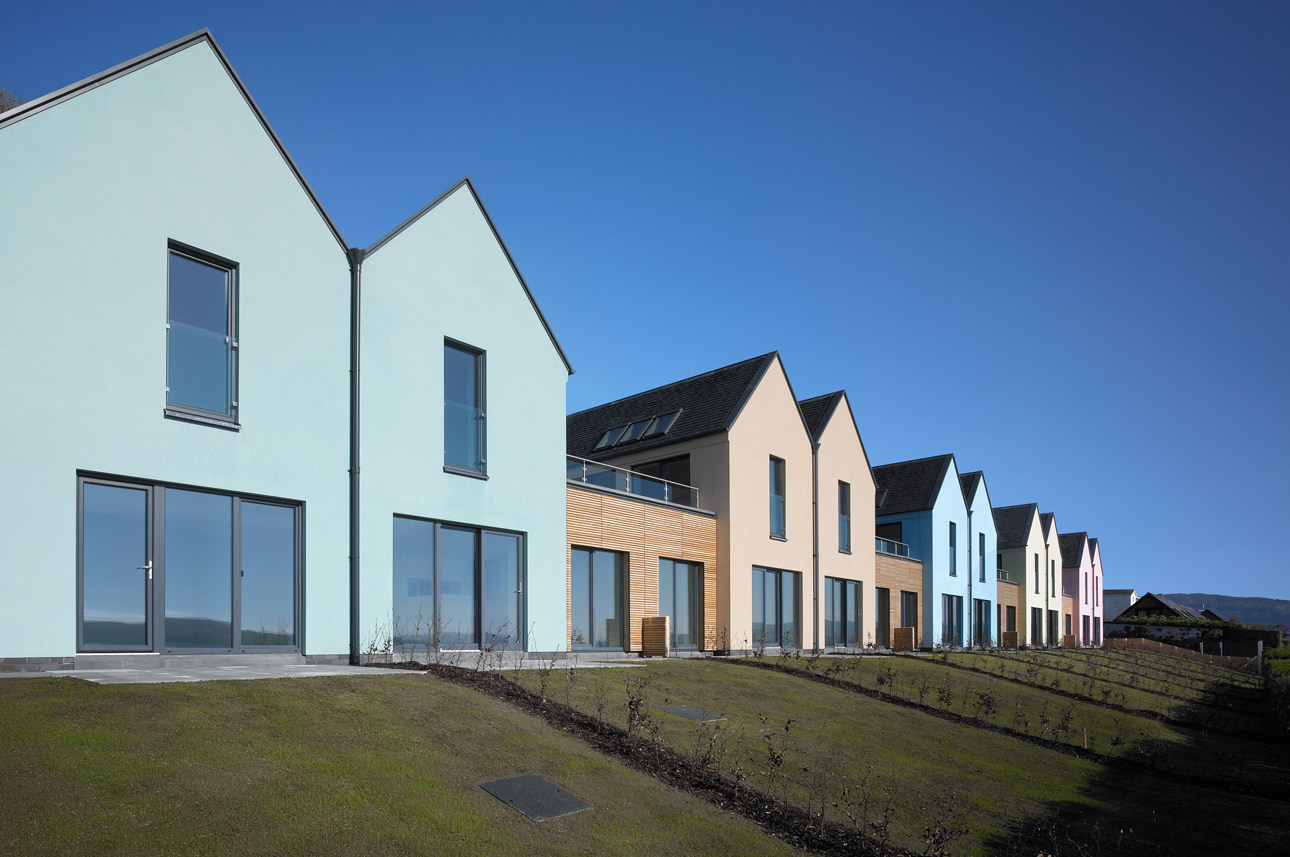
Argyll and Bute Council owned the site for this development and managed the care home that occupied it, which had been closed down when the building became dilapidated. The site overlooks the Firth of Clyde on a residential road leading south out of Dunoon, backed by woodland on a hill behind the development.
The council also owns the woodland, but it is managed as a public amenity by a local voluntary body, the Bullwood Group. As part of any re-development of the site, the council were keen to maintain Bullwood Group’s presence and public access to the woodland.
What this case study covers:
Fyne Homes as the right housing provider
With housing studies in the Dunoon area showing a shortage of affordable family housing, the council wished to see whoever purchased the site provide this kind of housing.
Fyne Homes found the presence of the Bullwood Group on the site and their management of the woodland as something that added value to the development. As social housing providers, they knew that they could provide the right type of housing to meet the council’s expectations.
They agreed to lease one of the completed housing units to the Bullwood Group as an office and workshop, on the theory that their presence would add a beneficial element of ‘mixed use’ to the development. It would also ensure the maintenance of the woodland, which Fyne Homes had no desire to undertake.
Fyne Homes purchased the site for the value given by the District Valuer, with its subsidiary company Fyne Initiatives ready to build the housing. They set out to design a scheme for the site that would generate the number of houses necessary to make the scheme work financially.
The Scottish Government provided the shared equity backing through its Homestake scheme to support the purchase of the houses by first-time buyers.
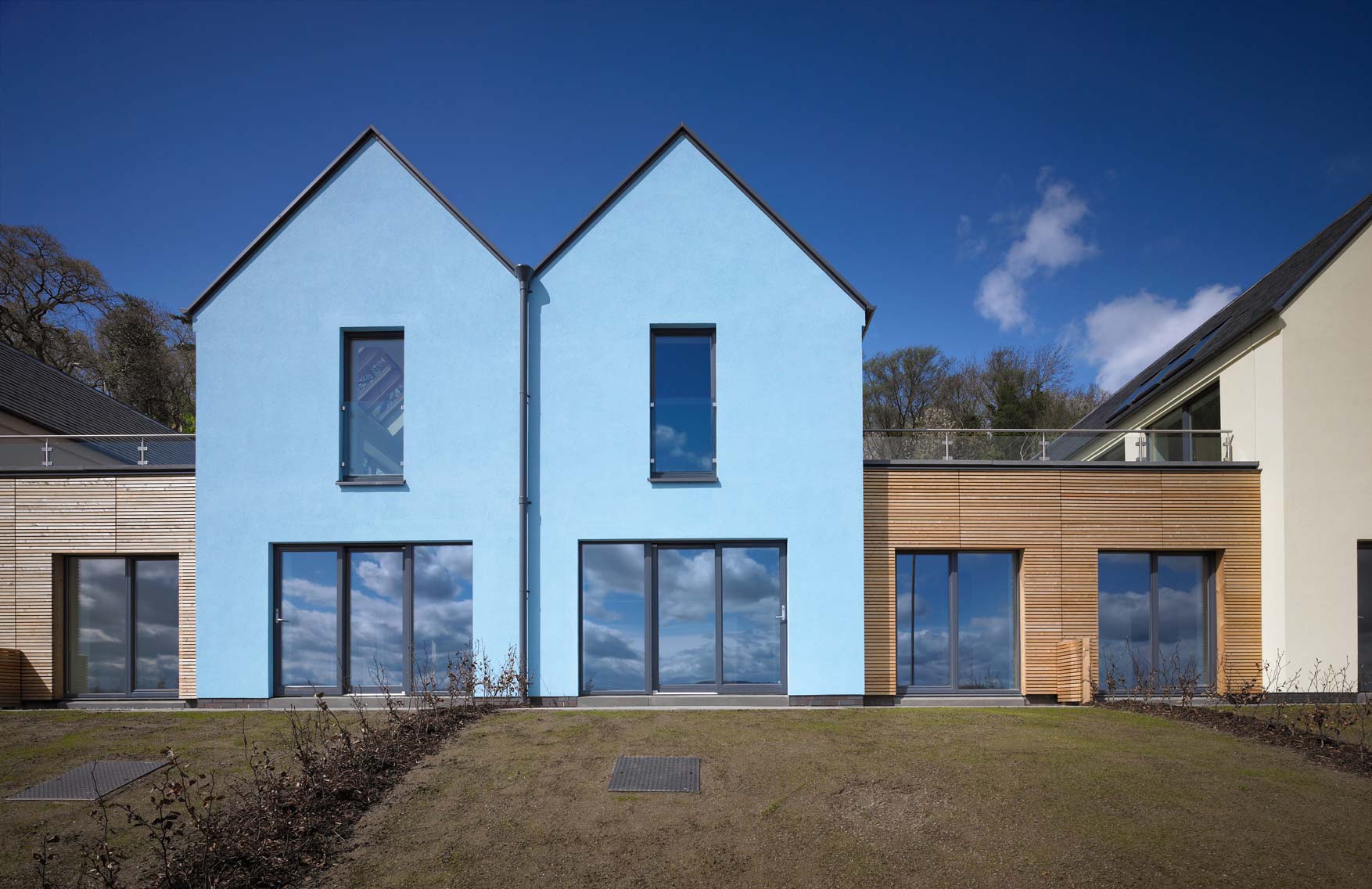
Design approach to Tigh-Na-Cladach residential development
Fyne Homes already have a strong existing commitment to creating low-energy housing. This was partly to reduce running costs for the tenants of their properties and address wider sustainability issues for creating communities that worked well for their tenants.
Image credit: Andrew Lee
Entrusting the design with Architect Gokay Deveci
Having formed a good relationship with the Architect Gokay Deveci in 2004, who created their award-winning A’Chrannag development of 15 rented homes in Rothesay, Fyne Homes felt that the nature of the Dunoon site provided a good opportunity to work with Deveci again.
After an initial discussion, they appointed him directly to this project even though he was not one of their framework architects.
In addition to his expertise in low-energy design, Deveci had a long-running commitment to bringing good design to social housing. Deveci also had a wider view of sustainability. He wanted to provide well-designed houses that people would be proud to live in and value in the long term.
Mixed range of dwellings with low-energy specifications
Fyne Homes and Deveci started by planning how many houses could be created on the site by considering its overall size and a viable financial package.
They aimed to maximise the number of 2 and 3-bedroom houses to meet the principal demand for family houses. They were also keen to create a mix of inhabitants by providing 1-bedroom apartments for young couples.
The ingenious creation of this particular mix of dwellings on this site, with low-energy specifications, was to become one of the key features of the scheme.
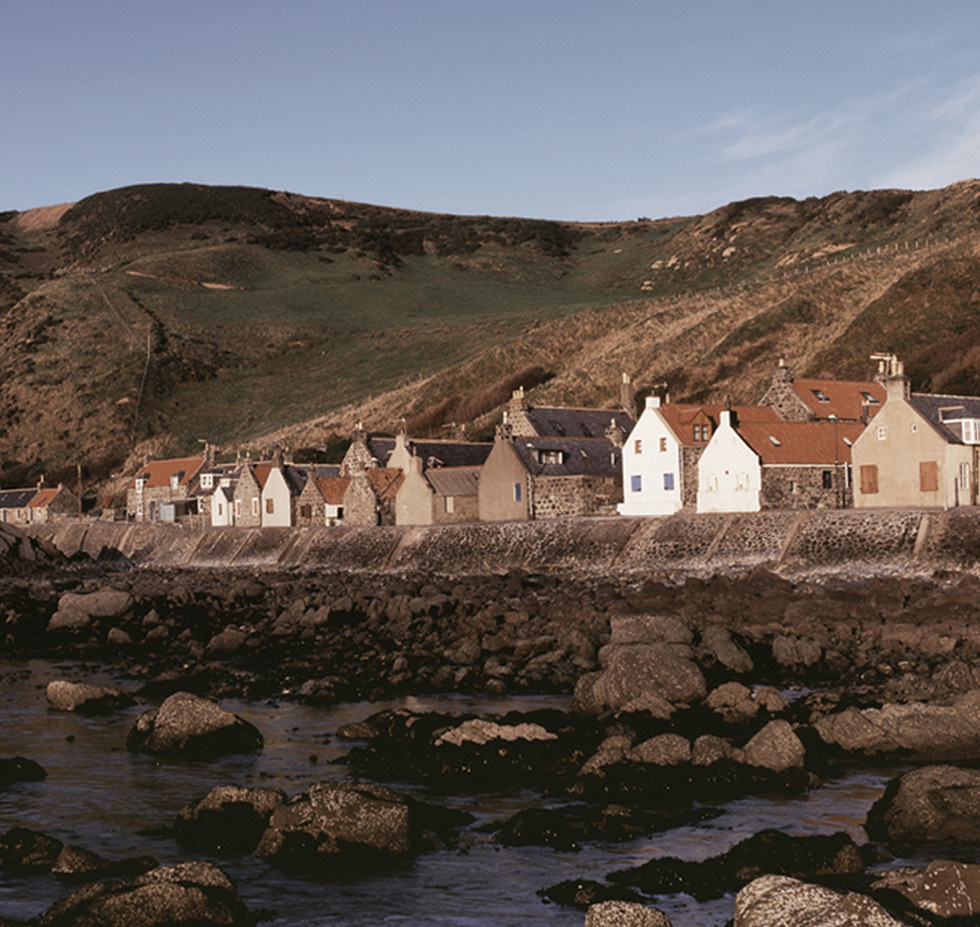
Process of the build
In his first site meeting with the client, the architect sketched the idea of a development that addressed the sea-front location with a simple vernacular feel to it. Perhaps with some reference to fishermen’s houses and a strong element of colour.
Image credit: Andrew Lee
In terms of orientation for low-energy purposes, the site was awkward. It was long and thin on a north-south axis, with a sea view to the east. The planners ruled out any south-facing glazing because it would overlook neighbouring properties.
The site had to accommodate 14-15 units, to make the development work financially. However, there was no room for 14-15 detached houses.
The final inter-locking of three, two and one-bedroom units in a terraced form, with their own outdoor space, took some time to resolve. Even the one-bedroom units, apart from one, are all located on the upper storey.
The fishermen’s cottage form, with its narrow gable pointing to the sea, endured as the final form of the terrace. The inter-locking of dwelling units means that 15 units are contained within a compact terrace of only ten gables.
This form has advantages for energy efficiency. The traditional form of gables orientated towards prevailing wind:
- minimises heat loss
- allows for sharing of walls between units and improves insulation
- generate cost savings that could be re-directed into extra energy-saving measures
Three alternative schemes were presented to the public in Dunoon long before making any planning submission.
Through this, the architect gained important information on local weather conditions, people’s general feelings about materials and what worked well in this area, and their views on other comparable developments.
This process also gave the architect confidence that his thoughts about the design of the scheme were going in the right direction.
Fyne Initiatives appointed a contractor from their framework agreement who was local. Although he had not worked with Deveci before, he had the skills to follow the architect’s instructions and deliver his aspirations.
The architect and contractor came together at an early stage and quickly formed a good understanding and a collective commitment to the scheme. This was particularly important given that the architect was based in Aberdeen.
In addition to meetings on-site, periodic design team meetings took place in Perth.
The idea of making one of the houses a ‘Passive House’ came through discussions between the architect, contractor, client and quantity surveyor during the design stage.
The quantity surveyor was able to re-direct the additional 15% funding needed for this house from savings made elsewhere on the scheme.
Despite the extra input needed from the contractor to monitor the build and installation standards to achieve the Passivhaus certification, both contractor and client were keen to do this.
It would be the first Passive House built as part of an affordable housing scheme in the UK.
The Scottish Passive House Centre in Glasgow were taken on as advisers for this part of the project, helping with calculations, advising on and supplying components, and liaising with the Passivhaus Institute on testing and certification.
In the middle of the project, they had to save £300,000 on the overall budget without compromising any of the overall sustainability targets or the Passive House. This was achieved by:
- removing features such as glass canopies
- reducing the specification of some ironmongery
- taking out some of the landscaping
The result of Tigh-Na-Cladach social housing
The final design provided a total of 15 units, comprising six one-bedroom, five two-bedroom and four three-bedroom dwellings.
The unit leased to the Bullwood Group is the ground-floor one-bed apartment (no. 1) at the north end of the site, and the Passive House is the 2-bedroom two-storey house (no. 15) at the southernmost end of the site.
A service road at the northern end of the site provides access for pedestrians and cars from the main road along the sea-front – Bullwood Road. This leads to parking for 30 cars and access to the front doors of all the houses (on the ground floor) and the foot of the outside stairs leading to the one-bedroom apartments on the first floor.
The one-bedroom apartments have an outdoor sitting or clothes-drying space (formed above the ground-floor kitchen of the houses) outside their front doors.
All houses have a small outside area around their front doors, next to the car park. It also has a small steeply sloping garden area on the other side of the house, leading off the living room, which faces the sea.
Ticking the boxes of sustainability and home standards
The houses are built to Code for Sustainable Homes level 4 and Lifetimes Homes standards. As on all properties built by Fyne Homes, space standards are more generous than the minimum required. The houses have large windows facing the sea, and the ceilings of all the second-floor rooms go up into the pitch of the roof.
Construction of the houses
The construction of the houses is a prefabricated closed panel timber frame system, pre-insulated with 300mm 80% recycled content glass wool insulation in the walls and 400mm in the roof. External walls are finished in blockwork and render. All windows and doors are triple glazed.
The Passive House has an additional 50mm of insulation fitted in the roof and is constructed to a much higher degree of airtightness. The framing of the glazing in the Passive House is also insulated.
Gas and electricity
There was no mains gas on the site. All the houses are equipped with an electric immersion heater for domestic hot water, operating on a timer. The Passive House also has a solar thermal collector on its south-facing roof, feeding the domestic hot water tank.
Heating in the 14 regular houses is by electric storage heaters located in the hall, living room and (for the houses on two-storeys) on the upstairs landing.
The Passive House is fitted with a Mechanical Ventilation and Heat Recovery system which extracts air from the kitchen and bathroom. It transfers the heat from this air to raise the temperature of the fresh air, which the system distributes to the lounge and bedrooms.
A 1kW heater pre-heats the air that the MVHR system brings into the house. A small 1kW air-to-air heat pump with its outlet in the hall and a heated towel rail in the bathroom upstairs generate an additional amount of heat in the house for the MVHR to circulate.
If south-facing glazing could have been introduced into the house these additional heat sources might not have been required.
External façade
The houses are painted in five bright pastel colours on the outside, giving the development a striking presence on the seafront. It creates a contrast to the otherwise mainly occupied buildings in the surrounding area, which are finished in stone, red brick or white render.
For a long time, the planners pressed for these new homes to also be finished in white render. However, Deveci persuaded them that there were many Scottish and Nordic precedents for using colour on the exterior of buildings, particularly sea-facing buildings – whereby fishermen often used up surplus colour from their boats.
For Deveci this kind of treatment not only enabled a group of simple houses to have a presence and make a statement but also reinforced the cultural aspect of sustainability.
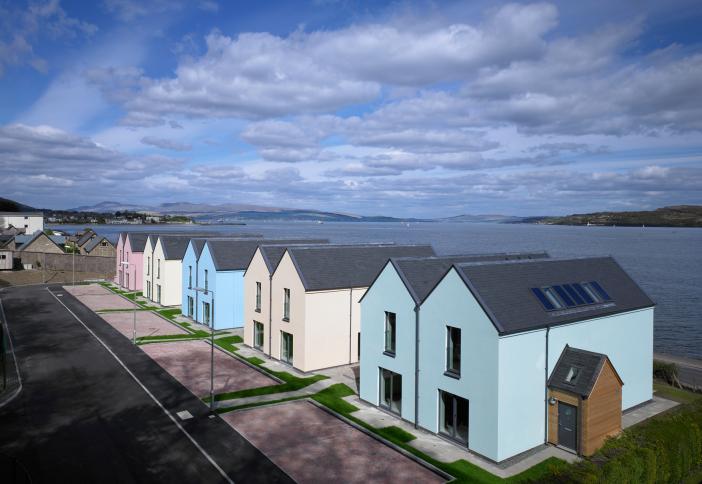
In use
The bright colours of the houses attracted attention to the development as it helped create a lot of interest in the houses when Fyne Initiatives started to promote them to potential buyers. It has also continued to make the houses a talking point in the area.
Image credit: Andrew Lee
Perception from Fyne Initiatives
Within two months, 20 applications were made for the 14 houses. A year after the houses were all occupied, Fyne Initiatives are pleased with:
- the mix of families and young couples
- the way the residents appear to interact
- the sense of community that has already been created
Tenants’ perception of Tigh-na-Cladach housing
Residents talk about where they live as ‘the street’.
The children from all houses use the access road and parking area, at the back of the developments, as a safe playground. Although, to the occasional anxiety of some owners about the wear on their patches of grass.
The use of one of the houses as an office, exhibition and training area by the Bullwood Group appears to add to the mix without causing any conflict of use through noise etc.
Although the tenants enjoy the proximity to the sea and the stunning views, they have expressed some dissatisfaction with the extent to which the slope of the garden limits their use. However, they say that the space behind the properties compensates for this.
Adhering to the request from the council highway department
Fyne Initiatives and the architect were disappointed that they couldn't make more of the space behind the properties. This was due to having been obliged by the council highway department to put in a 5m carriageway and the planners to allow parking space for 30 cars.
Feedback on interior spaces and electricity bills
All tenants are pleased with the space, light and warmth in their properties. One tenant also found that their electricity bills are substantially lower than where they lived previously. Depending on the size of the property, bills were averaging at £50-£80 per month for the ‘regular’ houses, with much lower bills in the Passive House.
The MVHR system
In the cold winter of 2010/11, the temperature in the Passive House could not reach the target of 210C. It has taken time for the MVHR system in the house to operate as designed, partly due to installation defects, but also allowing the house-owner to become familiar with the system.
Working together with educational institutions
The operation of the Passive House was monitored for a 2-year period by the Department of Mechanical and Aerospace Engineering at the University of Strathclyde, together with one of the other houses and another house nearby in Dunoon.
This is at no cost to Fyne Initiatives (or to the house's owner) and will be used by them to assess the value of using similar measures in future developments.
Glasgow School of Art is also carrying out a Post Occupancy and Performance Evaluation Study of the houses, funded by the Technology Strategy Board, which will also compare the operation of these houses to comparable homes in Dunoon.
Key lessons
The architect pays tribute to the client for backing the design, their commitment to sustainability and selecting the right team to get on with the build.
The architect stresses the need for genuine commitment by all members of the team on a project such as this, which was not a run-of-the-mill job. It needed attention to detail and the application of high standards.
The client’s wider approach to sustainability put the project into a bigger and more important context that facilitated this degree of commitment.
The client stresses the need to choose the right people with the right expertise for any scheme. In this case the contractor’s site foreman was particularly crucial to the success of the job, due to the meticulous attention he paid to the architect’s drawings. He won an NHBC ‘Pride in The Job’ award for his work on this scheme.
The bringing together of architect and contractor at an early stage to work together and develop a mutual understanding was also seen by the client as a crucial factor in the successful delivery of the project.
Fyne Initiatives were glad that they took some trouble to select a buyer for the Passive House who had some experience of low-energy systems and was willing to get to know this system and be patient while the system settled down.
However, the owner of the house would have welcomed a user-friendly operational manual for the MVHR and associated systems, rather than the technical manual that was left with the system after installation.
Although Fyne Initiatives welcomed the support from the Scottish Passive House Centre and associated consultants for the installation of the necessary measures in the Passive House (such as the MVHR), they regretted not being more on top of the workings of the system themselves by the time the house was occupied.
If they had been, they felt that they would have been better able to judge the nature of the problems when the system appeared not to be operating correctly, resolve it sooner and give more support to the owner of the property.
Header image credit: Andrew Lee
Related sustainability case studies
We have a variety of sustainability case studies available on our site. These project-specific case studies vary from residential to commercial to help you gain best practice examples of how you can design sustainable buildings.


